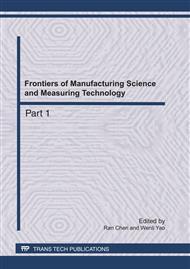p.1084
p.1089
p.1093
p.1099
p.1104
p.1110
p.1114
p.1119
p.1123
Study on Decreasing Vibration of High-Speed Train Semi-Active Suspension System
Abstract:
Lateral semi-active damper is designed by author based on the electro-hydraulic proportional valve, from the perspective angle of improving vehicle comfort; its purpose is to ensure vehicle driving safety. At the same time, the neural network adaptive control strategy is used for joint simulation of semi-active damper. The results show that lateral semi-active damper with the train body has significantly improved compared to the traditional passive lateral damper acceleration.
Info:
Periodical:
Pages:
1104-1109
Citation:
Online since:
May 2011
Authors:
Keywords:
Price:
Сopyright:
© 2011 Trans Tech Publications Ltd. All Rights Reserved
Share:
Citation:


